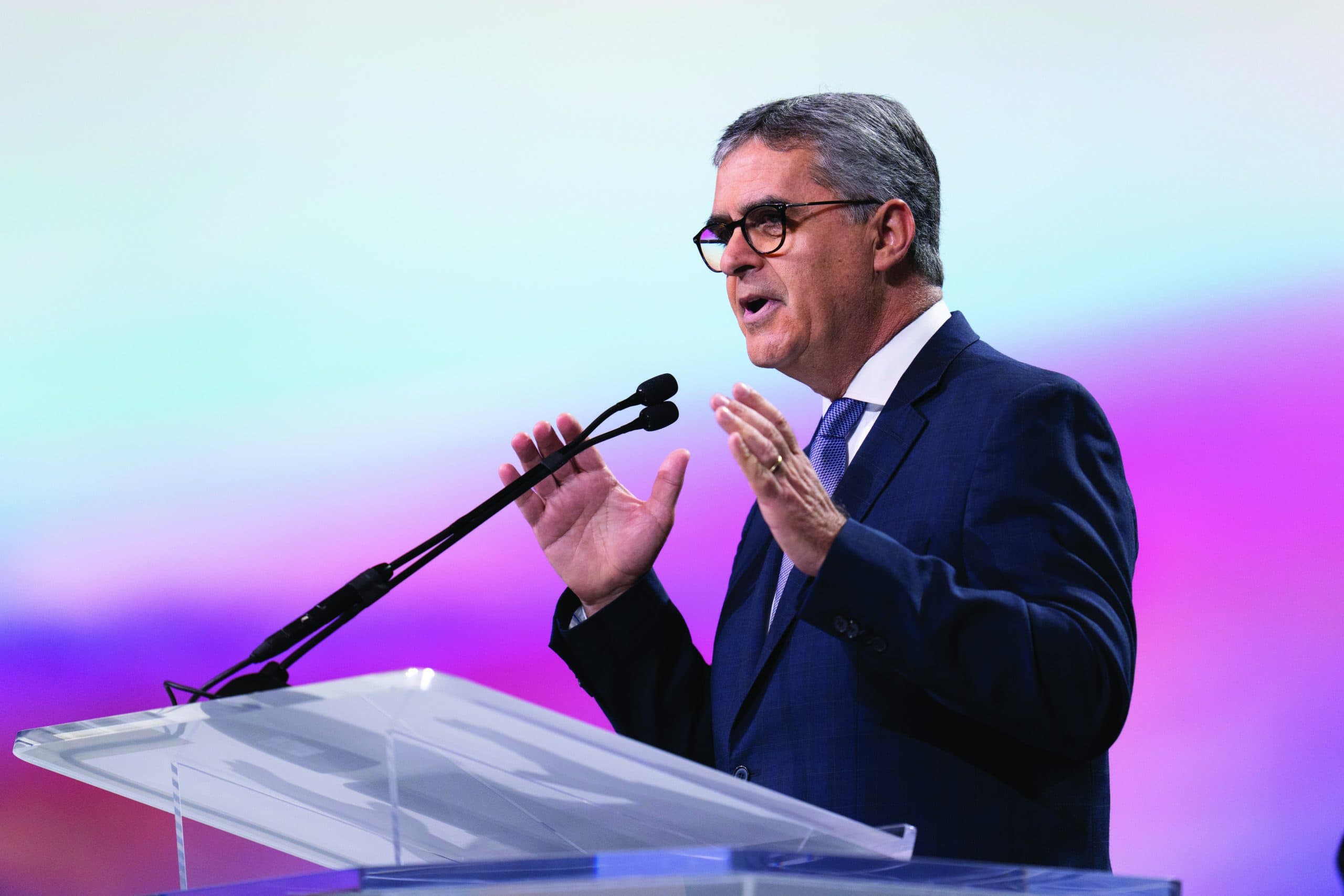
It may be the most important item on the agenda: at 10:11 a.m., one minute after the Session officially opened for business, General Conference secretary Erton Köhler read the church’s mission statement to the more than 1,800 assembled delegates. What might appear to an out- sider to be a matter of housekeeping (taking place immediately after dealing with mandatory legalities), the public declaration of the statement provides an all-important frame of reference for everything that will transpire over the days ahead.
“We will start this meeting with mission,” the chair, Artur Stele, explained to the delegates prior to the reading, “and we will end this with mission. . . . Mission is the heart- beat of this church.”
The statement, anchored in both the gospel commission of Matthew 28 and the Three Angels’ Messages of Revelation 14, was presented in three sections: our mission, our method, and our vision. It highlights the reason for the church’s existence and provides the all-important context for the business that will transpire in the hours and days ahead.
“We will start this meeting with mission,” the chair, Artur Stele, explained to the delegates prior to the reading, “and we will end this with mission. . . . Mission is the heartbeat of this church.”
Our mission, it declares, is to “make disciples of Jesus Christ who live as His loving witnesses and proclaim to all people the everlasting gospel of the Three Angels’ Messages in preparation for His soon return.” The method of achieving this mission is “through Christ-like living, communicating, discipling, teaching, healing, and serving.” The vision? The anticipation that God will faithfully execute His plan to restore “all His creation to full harmony with His perfect will and righteousness.”
“We are opening the session with the mission statement just to highlight to the delegates that this is our priority,” Köhler explained. “We need to highlight it in all our meetings, and the mission statement is the guide for the rest of the meetings. For this reason, our decision was to start everything by reminding our delegates that we will be guided by that, and this is our priority for everything we do. As a church, here in the Session, or in the local church, or in any part of the world: this is our call.”
The mission statement grounds the church firmly in its apostolic past on the Mount of Ascension (Acts 1) and anchors the hearts of delegates in our ultimate hope: the resolution of the great controversy. It reminds us that although the agenda is replete with seemingly mundane tasks, the delegates are about to touch holy things. It serves as a standard by which the ideas to be presented on the floor can be assessed: Would this move us closer to or away from our mission?
The Adventist Church has assembled. We labor in diverse cultures and languages, but this is what we all agree on and will continue to agree on when we return home, declaring ourselves to be in harmony with Christ: “The Son of Man has come to seek and to save that which was lost” (Luke 19:10, NKJV).
It was only right that the next order of business at the session was a baptism.